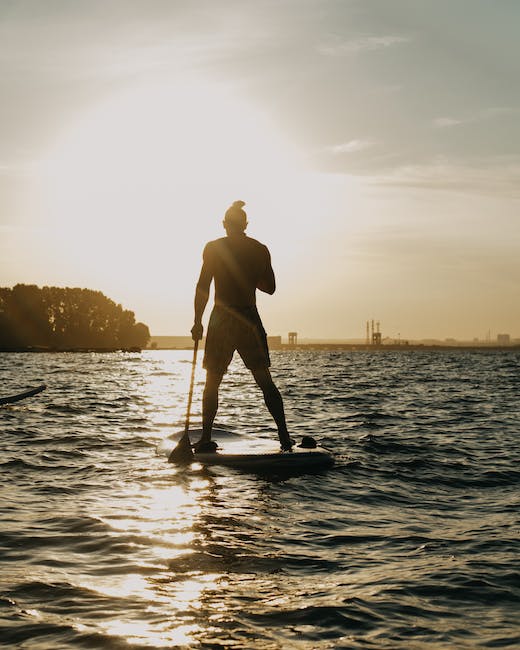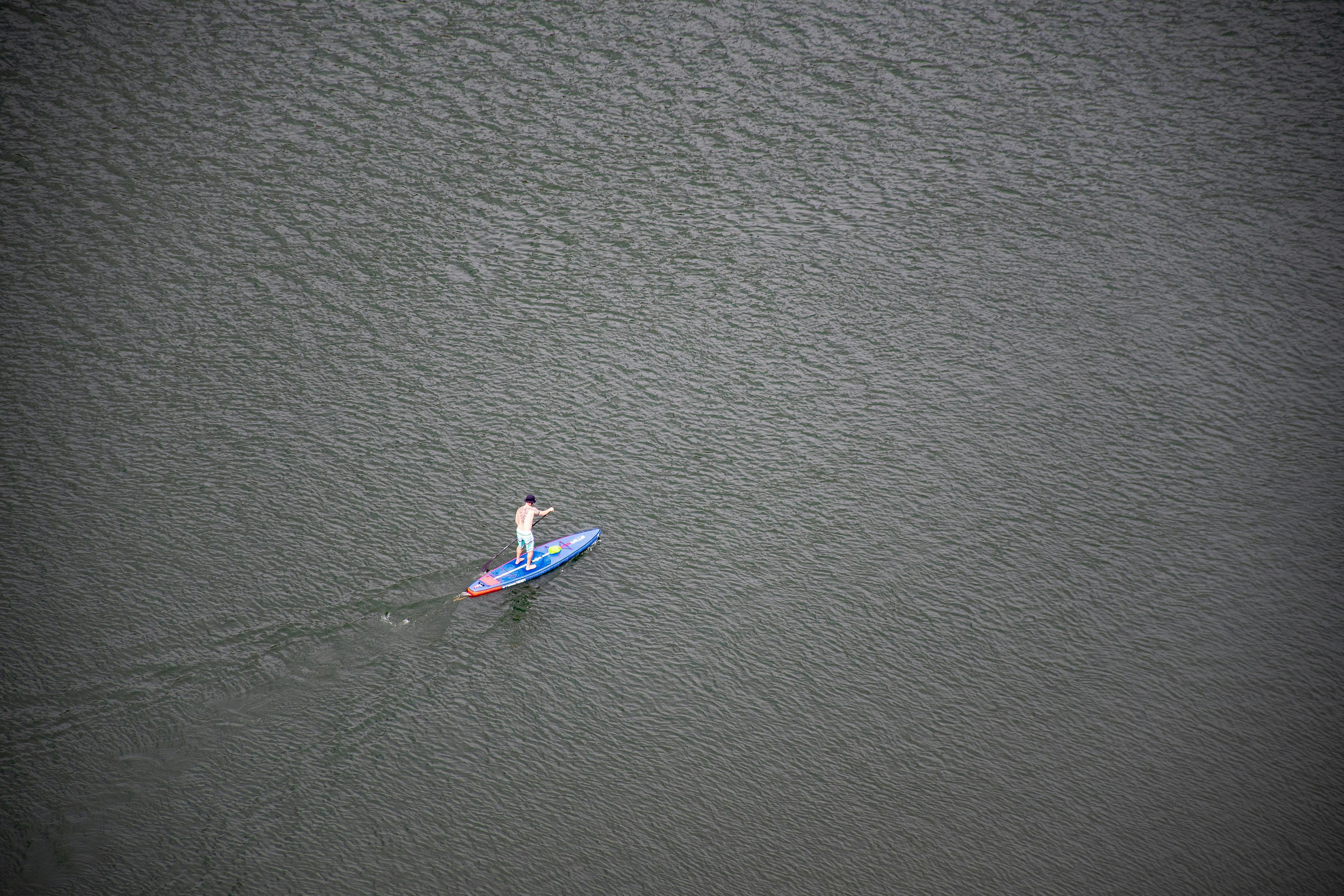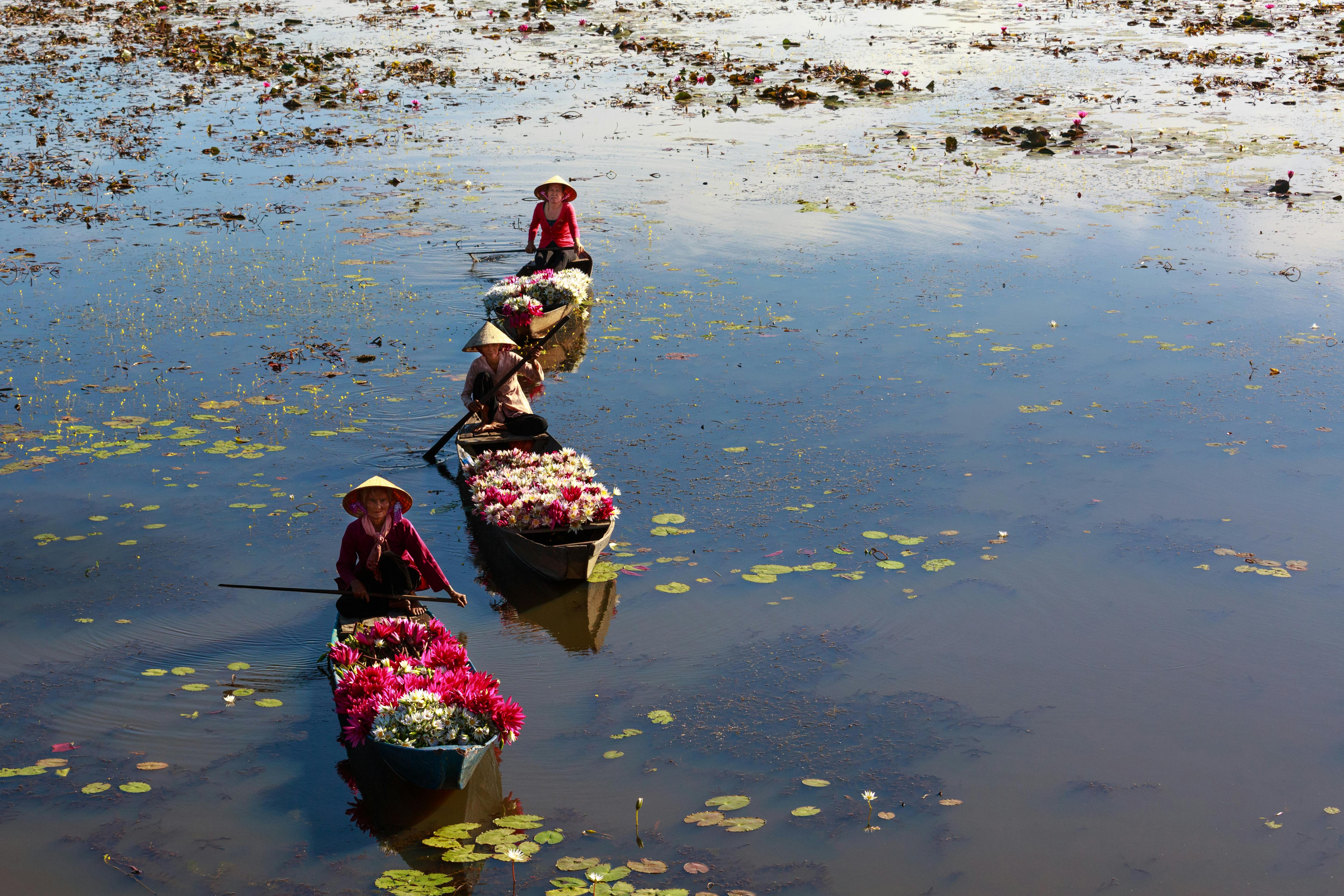What To Wear For Paddle Boarding

Paddle boarding is a great way to enjoy the outdoors and get some exercise, but you need to make sure you have the right clothing. Choosing the right outfit for paddle boarding can make all the difference in your experience. It needs to be comfortable, lightweight, and made of quick-drying material. In this article, we’ll discuss what to wear for paddle boarding so you can stay comfortable while out on the water.The best thing to wear for paddle boarding is a swimsuit or shorts and a t-shirt that you don’t mind getting wet. It’s important to wear clothing that won’t restrict your movement. Make sure you have a hat or visor to protect your eyes from the sun, and consider wearing polarized sunglasses for optimal visibility. For extra protection from the sun, consider wearing a rash guard or light-weight long-sleeve shirt. And don’t forget to apply sunscreen! Lastly, it’s important to wear footwear that won’t slip off in the water, such as water shoes or an old pair of sneakers.
Preparing Your Outfit For Paddle Boarding
When getting dressed for a paddle boarding session, comfort is key. You want to make sure you wear something that will allow you to move freely and stay comfortable while out on the water. However, protective clothing is also important to ensure you stay safe during your time out on the board. Here are some tips for choosing the right outfit for paddle boarding:
Choose light and breathable clothing. Cotton is a great choice because it’s lightweight, absorbs sweat, and allows air to circulate around your body so you stay cool and comfortable. Avoid heavy fabrics or anything that will drag in the water and make it difficult for you to move around on the board.
Wear a swimsuit or rash guard that covers your arms and legs. This will help protect your skin from sunburn as well as any potential scrapes or cuts from rubbing against the board during maneuvers. If you’re paddling in cooler temperatures, consider wearing a wetsuit for extra warmth and protection against hypothermia.
Wear shoes that have non-skid soles so they don’t slip when wet. Shoes with closed toes are best because they provide extra protection against stubbing your toes on rocks or other debris in the water. Sandals are not recommended as they can slip off easily while paddling and may cause injury if stepped on by yourself or someone else while out on the board.
Bring along a hat or visor to protect yourself from the sun’s rays and sunglasses to shield your eyes from UV radiation reflected off the water’s surface. Don’t forget sunscreen! Protecting yourself from sunburn will help ensure an enjoyable paddle boarding experience every time!
Choosing the Right Clothing for Paddle Boarding
Paddle boarding is a great way to relax and stay active, but you need to make sure you’re wearing the right clothing. The right clothing will not only make your experience more enjoyable, but it can also help keep you safe from the elements. From the type of fabric to the kind of shoes you wear, here are some tips to help you choose the best clothing for paddle boarding.
When it comes to choosing clothes for paddle boarding, comfort should be your top priority. Synthetic fabrics, like nylon or polyester, are best because they allow your skin to breathe and dry quickly. Cotton or wool fabrics may seem comfortable at first, but they can become heavy and uncomfortable when wet. If it’s chilly outside, opt for a lightweight insulated jacket or a wetsuit top for extra warmth.
It’s also important to wear shoes that provide traction on wet surfaces and give you protection from rocks and other debris in the water. Water shoes or sandals with rubber soles are ideal for paddle boarding since they provide good grip on slippery surfaces and have plenty of ventilation. Avoid wearing sneakers or flip flops since they won’t provide enough traction or protection in wet conditions.
Finally, don’t forget about sun protection! Sun hats are great for keeping your head cool and protecting your face from harmful UV rays. If you plan on spending a lot of time in the sun, make sure to apply sunscreen generously and reapply as needed throughout the day.
By following these tips, you can make sure that you have the right clothing so that you can enjoy your paddle boarding experience safely and comfortably. With the right clothing, you can get out on the water without worry!
Essential Clothing Items for Paddle Boarding
Paddle boarding is an increasingly popular water sport, and it’s easy to see why. It’s a great way to get out on the water and enjoy nature while getting a good workout. However, it’s important to dress properly for paddle boarding in order to stay safe and comfortable. Here are some essential clothing items for paddle boarders:
A snug-fitting rash guard or wetsuit top is a must in order to protect your skin from sunburn, windburn, and abrasion caused by the board. Look for a lightweight fabric that won’t weigh you down in the water. A pair of board shorts or swim trunks are also essential. They should be lightweight, quick-drying, and comfortable enough to allow you to move freely.
A wide-brimmed hat is also a good idea in order to protect your face from the sun and provide some shade when you need it. A pair of polarized sunglasses is also important as they will help reduce glare off of the water so that you can see clearly while paddling. Finally, make sure to bring along plenty of sunscreen with a high SPF rating so that you can stay protected from the sun’s harmful rays during your time on the water.
Protective Gear for Paddle Boarding
Paddle boarding is a great way to spend time on the water, but it’s important to be prepared and wear the right protective gear. Proper safety equipment can help prevent injuries and keep you safe while you enjoy your time on the water. Here are some of the most important pieces of protective gear for paddle boarding:
Life Jackets: It’s always important to wear a life jacket when you’re out on the water, no matter how experienced you are. Life jackets come in many different styles, including inflatable ones that can be easily stored in a backpack or on your board. Make sure to choose a jacket that fits your body properly.
Helmets: Wearing a helmet is just as important as wearing a life jacket when it comes to paddle boarding safety. Helmets provide protection for your head against impacts from rocks, branches, and other objects in the water. When shopping for a helmet, look for one that fits snugly and is certified by an organization such as US Coast Guard.
Footwear: Investing in good footwear is essential for paddle boarders who want to stay safe out on the water. You’ll want shoes that provide traction on wet surfaces, as well as protection from sharp rocks and other debris when paddling in shallow areas. Look for shoes specifically designed for paddle boarding that offer ankle support and cushioning.
Sun Protection: Sunburns can happen quickly when you’re out on the water, so it’s important to protect yourself with sunblock, sunglasses, hats, and long-sleeved shirts or rash guards. Choosing clothing made with UPF (Ultraviolet Protection Factor) fabric is an easy way to stay safe from harmful UV rays while enjoying your time on the board.
With this protective gear in tow you can confidently head out onto the water knowing that you’re prepared and protected should any unexpected incidents occur. Have fun out there!

The Right Footwear for Paddle Boarding
When paddle boarding, the right type of footwear is essential for comfort and safety. It is important to have the proper grip on your board to prevent slipping or injury, and the right type of shoes can make all the difference. There are several different types of footwear available for paddle boarding, including water shoes, sandals, and even booties. Each type has its own advantages and disadvantages, so it is important to choose the one that best suits your needs.
Water shoes are designed specifically for use in wet conditions. They are usually made from neoprene or other waterproof materials that provide a good grip on slippery surfaces such as a paddleboard deck. Water shoes also have a built-in drainage system that allows water to easily escape from them while you are in the water. One downside of water shoes is that they can become quite uncomfortable if worn for long periods of time.
Sandals are a great option if you want something lightweight and breathable but still provides good grip on your board. Most sandals come with rubber soles that provide excellent traction on wet surfaces and are often adjustable so you can get a snug fit. They also tend to be more affordable than other types of footwear, making them an attractive option for those on a budget. The downside of sandals is that they may not provide as much protection as other types of footwear, so it’s important to consider other options if you plan to be out in rough waters or doing any tricks on your board.
Booties are another popular choice when it comes to paddle boarding footwear. Booties usually offer more protection than sandals since they cover your entire foot and ankle, providing more support and stability when you’re out in the elements. Booties also tend to be more expensive than sandals or water shoes but will last much longer since they can withstand wear and tear better than other types of footwear.
No matter which type of footwear you choose, make sure it fits properly and provides enough traction on your board so you don’t slip or lose balance while paddling. The right pair of shoes can make all the difference when it comes to having an enjoyable experience out on the water!
Sunglasses and Hats for Paddle Boarding
Paddle boarding is an exciting and exciting activity that requires you to be well-equipped with the right gear. Sunglasses and hats are essential items to have on hand to ensure that your eyes are protected from the harsh rays of the sun. The glare of the sun reflecting off the water can be blinding, so it is important to make sure you have sunglasses and a hat with a wide brim to keep your eyes shielded from its rays. Additionally, having a hat with a UPF rating of 50+ will ensure that your head and neck are also well-protected from the sun’s UV rays.
When choosing sunglasses for paddle boarding, it is important to select ones that are designed specifically for water sports. This means they should be comfortable and fit snugly on your face without sliding down when you move around in the water. They should also have polarized lenses which help reduce glare as well as provide UV protection from both UVA and UVB radiation. Additionally, look for lenses with a mirrored coating which can help reduce eye fatigue by deflecting bright sunlight away from your eyes.
Hats are also critical for protecting your head while paddle boarding. Choose one with a wide brim which covers both your face and neck so you can stay out in the sun longer without worrying about getting sunburnt or having headaches due to too much exposure. Look for hats made with breathable fabrics like cotton or mesh so they won’t get too hot while you’re paddling around in the ocean or lake. Additionally, choose one that has an adjustable chin strap so it won’t fly off when there is a gust of wind.
Having both sunglasses and hats will help ensure that you stay comfortable while enjoying paddle boarding in sunny weather conditions. With the right gear, you can enjoy this fun activity without worrying about eye strain or sunburns!
Wetsuits and Rashguards for Paddle Boarding
Paddle boarding is an exciting sport that can be enjoyed in a variety of settings. Whether you’re a beginner or an experienced paddler, it’s important to have the right gear to keep you comfortable while out on the water. Wetsuits and rashguards are essential items for paddle boarding, as they provide protection from the elements and help keep you warm.
A wetsuit is designed to keep your body warm in cold water by trapping a layer of water between your skin and the suit. The trapped water is then heated up by your body, creating insulation that keeps you warm. Wetsuits are available in short or long sleeve styles, as well as full-length suits that cover your entire body. Wetsuits are made from neoprene, which is a lightweight material that provides good insulation and flexibility.
Rashguards are also essential for paddle boarding. They provide protection from sunburns and windburns, as well as helping to reduce friction between your skin and the board. Rashguards are typically made from stretchy materials like spandex or lycra, which allow for freedom of movement while providing coverage from the elements. Rashguards come in a variety of colors and designs, so you can find one that fits your style.
When choosing wetsuits and rashguards for paddle boarding, it’s important to consider your environment. If you live in a cold climate, you may want to opt for a thicker wetsuit with more insulation. For warmer climates, lighter weight materials may be better suited to keep you comfortable while still providing adequate protection from the elements. Additionally, it’s important to choose items that fit properly so they don’t restrict movement or cause chafing.
Having the right gear is essential for safe and comfortable paddle boarding experiences. Wetsuits and rashguards are two key pieces of equipment that will help keep you protected on the water so you can enjoy every moment out on the waves!

Conclusion
Paddle boarding is a great way to explore the outdoors and get a good workout. However, it’s important to consider what you wear for paddle boarding in order to stay comfortable and safe. Opt for lightweight, quick-drying materials that won’t constrict your range of motion. Additionally, make sure your clothes are breathable and provide protection from the sun. Lastly, choose shoes that offer traction and support. With these tips in mind, you can be sure you’ll have an enjoyable and safe time on the water!
So don’t forget to dress appropriately when you go paddle boarding – it can make all the difference for a great experience out on the water.
